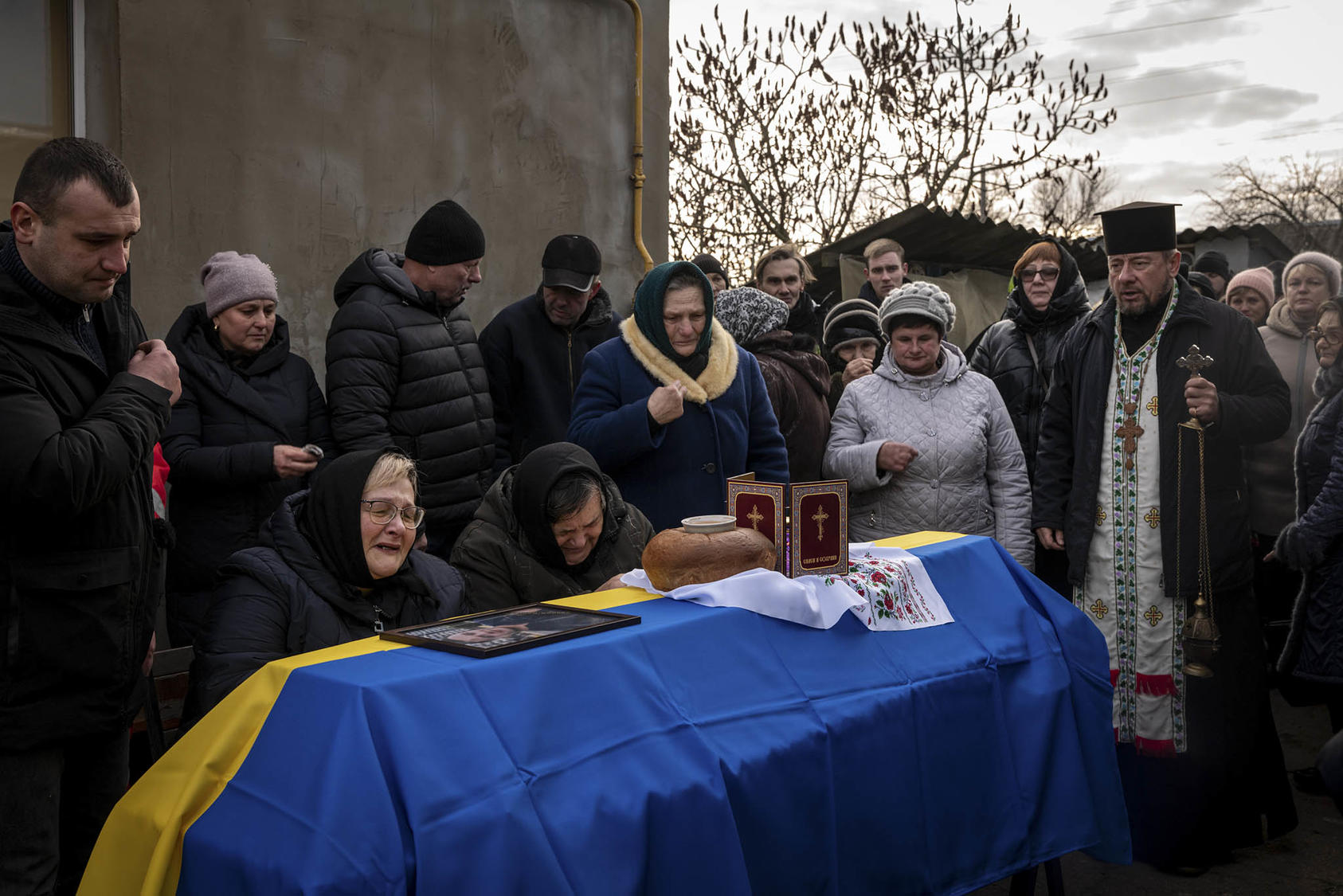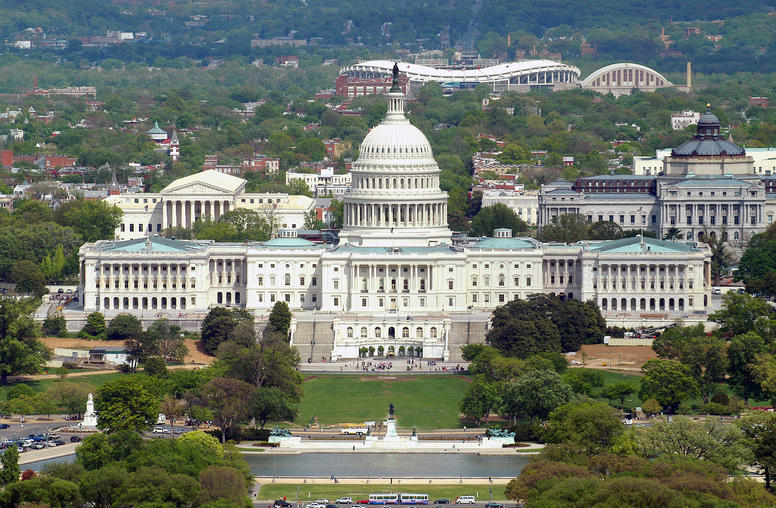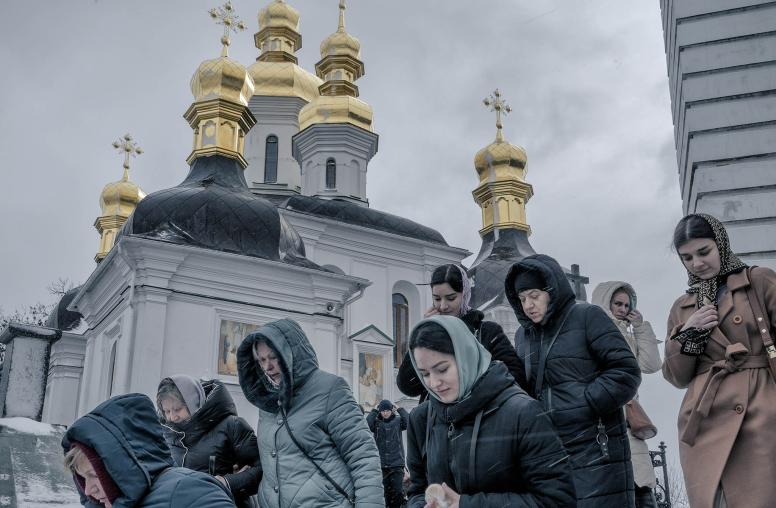Ukraine: Can We Shorten a Path to Peace in 2023?
Russia is preparing a new offensive. If Ukraine can preempt it, we can expect a shorter war.
How will Ukraine’s war evolve in 2023, and can it yield a path to peace? Analysts’ scenarios for the war are full of unknowns. Yet one certainty is that Ukrainian soldiers and civilians will continue to fight Russia’s assault with every weapon at hand — or with none. Building a sustainable, rather than illusory, path to peace must take account of the Ukrainians’ determination. And laying such a path will benefit from noting that the immediate option for peace rests in the hands of Vladimir Putin, who on any given day could end this war by withdrawing his forces.

One Certainty: Ukrainians’ Resistance
In winter, this conflict has settled into a brutal war of attrition. At the military front lines in Donetsk province and elsewhere, Russians have built new fortifications against Ukrainian counteroffensives like those that recovered parts of Kharkiv province and the city of Kherson last fall. Moscow has more than doubled the size of its force directed against Ukraine, sending new soldiers from its autumn conscription drive. U.S. officials estimate that 50,000 Russian frontline fighters — 40,000 of them recruited among Russian prison inmates — are those of the private, Kremlin-aligned mercenary firm, the Wagner Group.
An icon of this grinding warfare is the deepening rubble of Bakhmut, the city where Wagner Group fighters have struggled for months to dislodge Ukrainian soldiers. “Every house has become a fortress,” said Wagner’s owner, Yevgeniy Prigozhin, in a video last week that showed him visiting near the front. “Our guys sometimes fight for … weeks over one house,” he said. President Zelenskyy visited Bakhmut to inspire his soldiers just before departing for Washington three weeks ago. Bakhmut remains in Ukrainian hands.
Yet Putin’s most devastating winter assault continues to target Ukrainian civilians, most in cities distant from the front lines. There, Moscow’s daily attacks immiserate millions of unarmed people and add daily to the war’s civilian casualties — now at a minimum of 18,000 Ukrainians, U.N. monitors said last week.
Ukrainians nationwide have shown amply the evidence that they will not surrender, inspiring the world with the images of their courage and resilience under this criminal assault. A less publicly visible proof of their commitment has been a consistent, effective Ukrainian insurgency campaign waged — often by ordinary citizens at great risk — in areas of Russian occupation. Another proof is in the consistency of Ukrainian national opinion. In the latest of regular surveys by the Kyiv International Institute of Sociology, 85 percent of Ukrainians rejected any surrender to Russia of sections of Ukraine that it has seized, “even if because of this the war will last longer.”
What Next in 2023?
In part, these winter months are a race between the Russians and the Ukrainians to prepare the next significant offensive in the war. Analysts have said this year could bring any of the three broad scenarios below — or a combination of them.
- An early Russian offensive. Ukrainian government and military leaders, and independent analysts, report evidence of Russia’s preparation for a new offensive, with massed infantry forces from their recent conscription, that could repeat the attempt to capture Kyiv that Ukraine defeated last spring. We are now only six weeks from the point in last year’s calendar at which Putin chose to strike. The Kremlin has signaled threats to again invade from the north, through Belarus, as well as the south. Ukrainian officials say this is likely an attempt to force Ukraine to spread its defenses thin.
- A next counteroffensive by Ukraine. Analysts note that Ukraine is continuing to build capacity for a further counteroffensive into Russian-occupied zones in the south or east. Armored fighting vehicles from the United States, France, Germany and, soon, Britain are critical to those preparations. Ukraine will need more armored vehicles, long-range rocket artillery, and fuller supplies of ammunition, to drive the Russians out of the country. If a Ukrainian counteroffensive is as successful as the previous ones, it could crack a fragile Russian army and shorten the war.
- An extended stalemate. Analysts say one risk is a longer stalemate in which Russia continues, with Iranian weapons, to grind down Ukraine’s cities, transport, power systems and economy. Absent a capacity to win a battlefield victory, Putin would welcome such an impasse in his desire to bleed both the Ukrainians and their international support. Scholars Ivo Daalder and James Goldgeier warn this week that such a stalemate could last for years, requiring a more robust, long-term containment of Russia.
Options for Peace
What options could shorten this war and open a path to a sustainable peace? The best prospect for a shortened war is if Ukraine can move quickly to preempt the offensive that Putin is scrambling to organize.
Our search for peace needs to avoid rewarding the aggressor, encouraging others to emulate him, and thus undermining an international rule of law. It also must avoid the trap of enabling a renewed assault by giving Russia time to rebuild its capacities. And it must not betray the desire and determination of Ukrainians to secure their sovereignty, territorial integrity and future security.
Amid unofficial policy discussions in the United States, proposals periodically have emerged for an immediate ceasefire and peace talks. This would be the kind of “negotiation” that Putin dreams of — one tilted unalterably in his favor while his invasion force holds hostage millions of Ukrainians and swaths of their country (currently about 16 percent of Ukraine’s territory). A ceasefire now would yield a period of hollow diplomacy that Putin would use to rebuild his resources and then resume his clearly intended goal — to capture Kyiv, install a government of his own preference and turn Ukraine into a vassal state. Clearly, now is not the time for a ceasefire.
Putin is seeking precisely such a Kremlin-friendly “peace process” — as on December 25, when he re-declared his readiness “to negotiate with everyone” (on the same day that his forces bombarded at least 45 Ukrainian towns and cities). Last week, Putin proclaimed a “ceasefire” over the Orthodox Christmas that did not halt Russian attacks.
Ukraine has made clear that it is prepared to negotiate peaceful future relations with Russia once Russian troops are withdrawn. But it will not surrender, nor should it, to Putin’s modern version of a 19th-century imperialist war of conquest replete with kidnappings, torture and cold-blooded murder of Ukrainians simply for being Ukrainian. Pressing Ukraine into some version of that surrender through an adverse peace process would be not only ineffective in the long term and a weakening of international security. It would also be, for Ukraine’s allies, a self-inflicted moral wound.
The option for a sustainable peace is to continue supporting Ukrainians in ways that can let them establish the conditions for a fair peace process — a set of ideas that Ukrainian President Volodymyr Zelenskyy offered in November at the Group of 20 summit conference in Indonesia, and that he has proposed to advance through a Group of Seven summit this winter. Ukraine will pursue discussion of that 10-point concept, summarily dismissed by Russia, in its planned February 3 conference with the leadership of the European Union, which supports the idea.
Building this option for a sustainable peace will require the United States and NATO to keep signaling clearly to Russia (and the world) that Russians can address their own legitimate security concerns through diplomacy rather than killing. It will mean showing as well that the Western coalition will continue to support Ukraine for as long as it takes. When a viable peace process can be launched, it also will require that U.S. and European governments be prepared to conduct their own talks with Russia and others on regional and strategic issues, as USIP’s Juan Diaz Prinz has noted.
Paths out of war are seldom easy — and in 2023, as last year, the immediate option for peace is in the hands of Putin. On any given day, he can formulate his declaration of victory, withdraw his forces and focus on managing the domestic confusion and turmoil that would arise — alongside unquestionable relief and joy for countless Russian families. Analysts rightly note that such a course for Putin would entail serious, perhaps existential, risks and difficulties. His current course entails the same. Either way, they are difficulties he has earned. In the meantime, the Ukrainians will continue to defend their land, their families, their way of life. With our help, they will prevail.



